Six seaside heritage sites across the UK have been given Grade II listed status.
The sites include a picturesque boathouse off the coast of Devon that was built to celebrate the coronation of King George IV in 1937, eight of Blackpool’s decorative promenade shelters, and a stone obelisk in Southend that marked the City of London’s jurisdiction over the River Thames from 1197 to 1857.
Hythe Pier, which opened in 1881 and still runs a public electric train dating back to 1922, has also been listed, along with Skegness Town Hall.
The designations were awarded today by the Department for Digital, Culture, Media and Sport on the advice of Historic England. Deborah Mays, Head of Listing at Historic England, said: ‘Our seaside towns are a huge part of our national story. People have enjoyed trips and holidays to our coastal towns for hundreds of years and each place contributes to an important part of our shared history. I’m thrilled the significance of our seaside heritage has been recognised with these six new listings, especially as so many of us will be heading to the seaside to enjoy the final few days of summer this bank holiday weekend.’
Allan Brodie, Senior Architectural Investigator at Historic England and author of The Seafront, said: ‘These new listings highlight the huge variety of England’s seaside heritage. They also reveal that there’s more to look at this weekend than just the sea and the beach.’ And Caroline Dinenage, Heritage Minister, said: ‘Our magnificent seaside towns have been must-visit destinations for hundreds of years and many of us have rediscovered just how much they have to offer this summer. It is absolutely right that these sites will be recognised and protected.’ Scroll down to learn more about each site…
Hythe Pier, Hampshire – listed at Grade II

Hythe Pier stretches 640 metres (2,099ft) from the centre of Hythe out into the channel of Southampton Water

It was opened in 1881 to facilitate the ferry steamers that travelled between Southampton and Hythe, and acted as one of the main access points to the New Forest


In 1922 an electric railway was built on the southside of the pier. It is still running today and is believed to be the oldest continuously operating public pier train in the world
Hythe Pier stretches 640 metres (2,099ft) from the centre of Hythe out into the channel of Southampton Water, explains Historic England.
It continues: ‘It was opened in 1881 to facilitate the ferry steamers that travelled between Southampton and Hythe, and acted as one of the main access points to the New Forest. According to a map from 1575, a ferry has operated from Hythe to Southampton from as early as the Middle Ages, making the pier a historically significant transport site that still functions now.
‘The pierhead buildings have good architectural detailing, and the pier’s well-surviving steel and cast-iron substructure, slender columns and cross bracing make it a strong example of a late 19th-century pier with a touch of elegance. Piers appeared at the start of the 19th century to provide landings for ferries, but by the late 1860s we’d entered the heyday of the British seaside and so they were also used for pleasure, such as promenading and funfairs. In 1922 an electric railway was built on the southside of the pier. It is still running today and is believed to be the oldest continuously operating public pier train in the world.’
The Crow Stone, Chalkwell Beach, Southend – listed at Grade II

The Crow Stone is an eight-metre- (26ft) tall stone obelisk that sits proudly on Chalkwell Beach in Southend

It was erected between 1836 and 1837 to mark the eastern boundary of the City of London’s control over the River Thames. This obelisk replaced a previous stone from 1755 and was designed to be sturdier and more visible than previous versions
‘The Crow Stone is an eight-metre- (26ft) tall stone obelisk that sits proudly on Chalkwell Beach in Southend,’ says Historic England. ‘It was erected between 1836 and 1837 to mark the eastern boundary of the City of London’s control over the River Thames. The City purchased the rights of control from King Richard I in 1197 and took charge of the fisheries and tolls along both the Thames and part of the River Medway.
‘The City of London’s territory was marked by London Stones, such as the stone at Upnor (listed at Grade II) and at Yantlet Creek (also listed at Grade II). The Lord Mayor of London and other officials would visit them on their septennial river trips, with all of their associated pomp and circumstance.
‘Although the City lost its control of the river to the Crown in 1857, the presence of the London Stones is a reminder of the historical events that took place, as well as the City of London’s determination to retain power and influence.
‘This obelisk replaced a previous stone from 1755 and was designed to be sturdier and more visible than previous versions. Still standing nearly 200 years later despite tidal waters, it has certainly met its target.’
Coronation Boathouse, Bantham Quay, South Devon – listed at Grade II
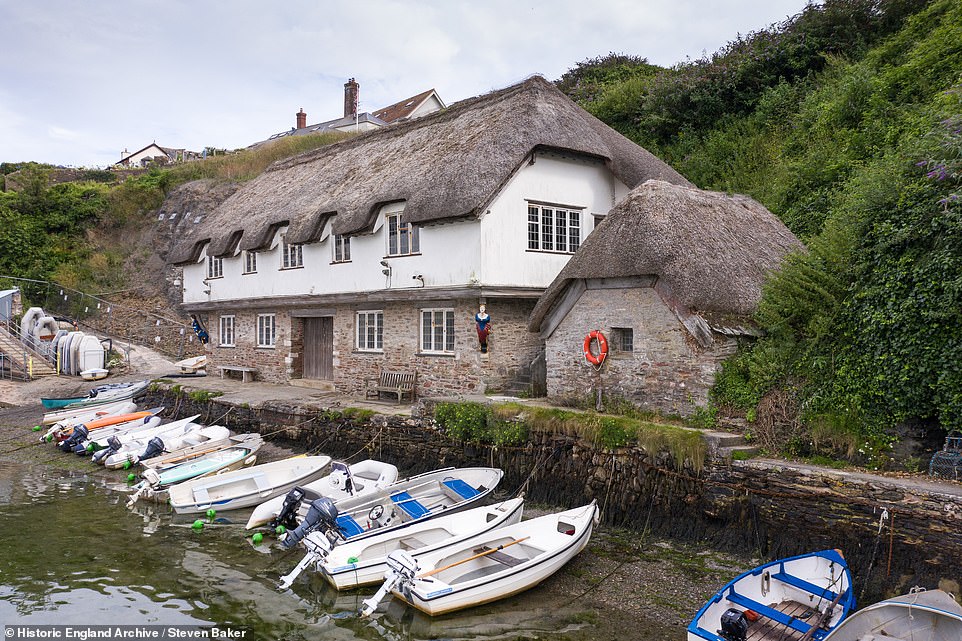
The Coronation Boathouse was built to celebrate the coronation of King George IV in 1937
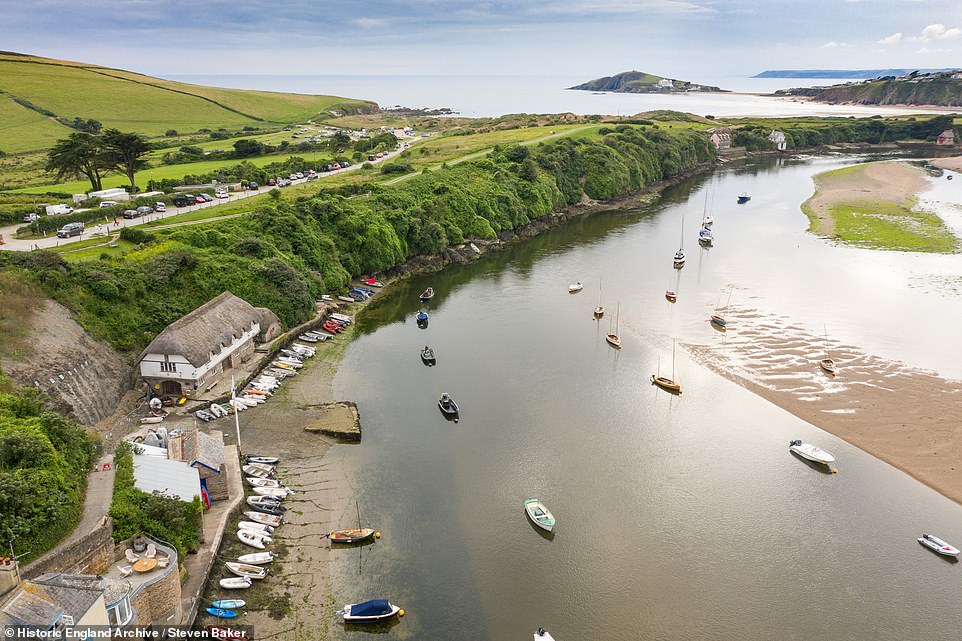
The boathouse is a ‘rare survival’ and despite some modern flourishes, it draws on ‘historical design elements’
The Coronation Boathouse sits on the estuary of the River Avon, within the South Devon Area of Outstanding Natural Beauty, and ‘its striking, distinctive design makes it a landmark feature’, says Historic England.
It continues: ‘It was designed by (John-Baptiste) Sebastian Comper for Lieutenant Commander Charles E Evans RNVR, the owner of the village of Bantham and its surrounding area, to commemorate the coronation of King George VI in 1937. This is marked by the Royal insignia and wall plaque to the east gable end.
‘The striking boathouse is a rare survival and despite some modern flourishes, it draws on historical design elements such as Elizabethan traditions and maritime themes, uniting local materials and building traditions with early 20th century, high-quality craftsmanship. The next-door store building is also listed at Grade II, with its thatched roof and stone walls making it a well-preserved example of the buildings that once were commonplace across the coastal landing places of Devon and Cornwall.
‘The two structures are rare survivals and, alongside the other buildings in the area, highlight an evolved pilchard fishing community that was established in the 18th century and flourished until the late 19th century.’
Promenade Shelters, Blackpool, Lancashire – listed at Grade II
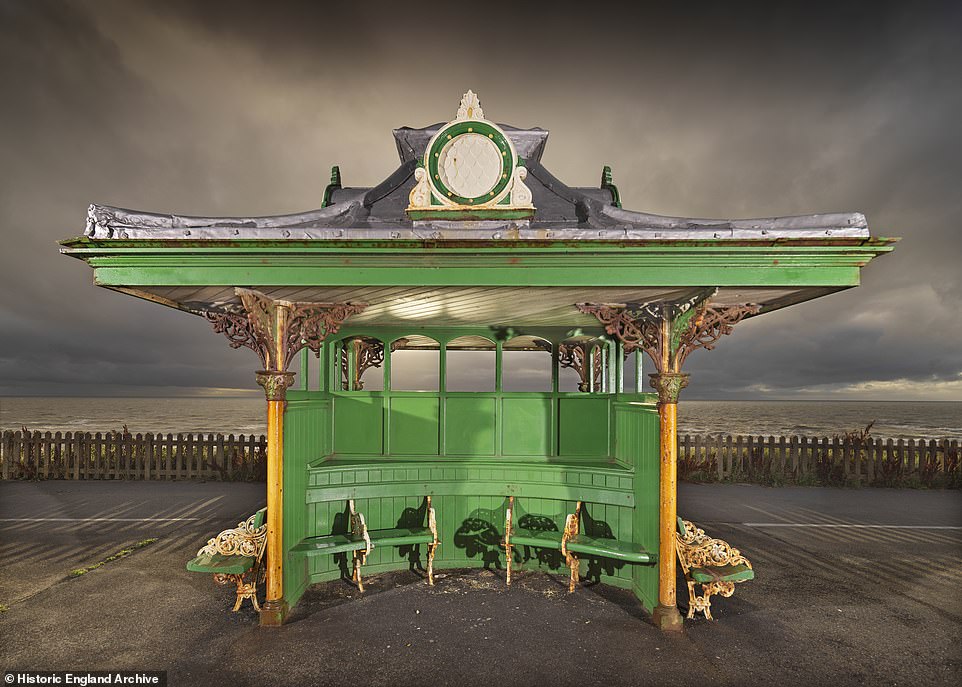
The shelters are rare survivals of good-quality Edwardian cast-iron street shelters, says Historic England
Blackpool’s seafront is lined with promenade shelters, most of which have stood for more than 100 years as civic features intended to enhance the street scene, reveals Historic England.
It says: ‘Eight shelters are already listed at Grade II and the list entries of these are being updated today at the same time as the listing of a further eight shelters.
‘Most of the shelters were made between 1903 and 1904 by renowned iron-founders Walter MacFarlane and Co (MacFarlanes), of Glasgow and the Lion Foundry Company, of Kirkintilloch. They were commissioned by Blackpool Corporation, some especially for the “new promenade” at South Shore. They stand as a symbol of the archetypal British seaside town, visited by so many holiday-goers since the 1800s.
‘The shelters are rare survivals of good-quality Edwardian cast-iron street shelters, particularly redolent of the seaside, and retain many of their original design features. Six of the listed shelters were relocated around 2005 to stand within the Town Centre Conservation Area, while the others stand to the north of the recently designated North Promenade Conservation Area.’
Middle And Lower Walk Colonnades, Blackpool – listed at Grade II
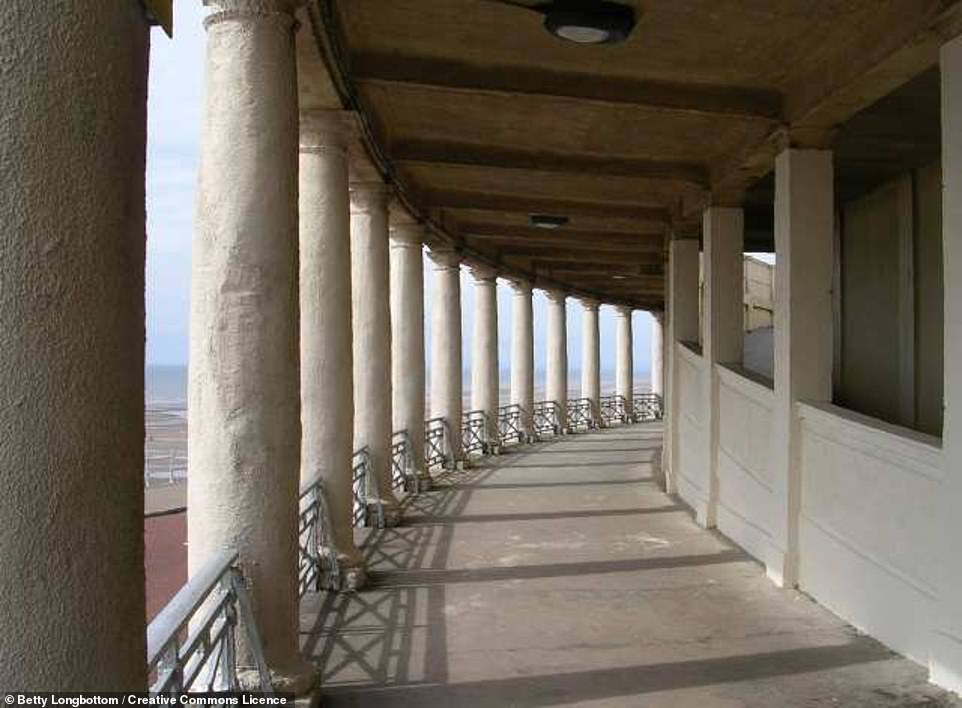
Blackpool’s colonnades ‘are important examples of inter-war seafront improvements in one of the world’s largest seaside resorts’, says Historic England
Historic England lavishes praise on Blackpool’s colonnades.
It says: ‘The Middle and Lower Walk colonnades are reinforced-concrete structures that run for around 1km along Blackpool’s seafront. They were designed by the Borough Surveyor’s chief architectural assistant John Charles Robinson (who later became the Borough Architect). Following Blackpool’s growth as an important leisure destination in the second half of the 19th century, the early 20th century saw further improvement and extension of the town’s three-level promenades.
‘The Lower Walk colonnade was built in 1923 as a link between the upper and lower levels, and a gateway to the middle level. From 1923 to 1925 the Middle Walk colonnade was built as a strengthening structure and a way of vertically stacking the upper walk over the middle walk.
‘This allowed the tram tracks to be moved to free up road space for cars. Both are major seafront structures in Blackpool’s North Promenade Conservation Area. They are also important examples of inter-war seafront improvements in one of the world’s largest seaside resorts, reflect the growth in the leisure industry and motor transport, and highlight the higher standards of amenity expected by visitors by the early 20th century. Architecturally, they demonstrate good neo-Classical detailing and technically sophisticated cantilevering.’
Skegness Town Hall, North Parade, Lincolnshire – listed at Grade II
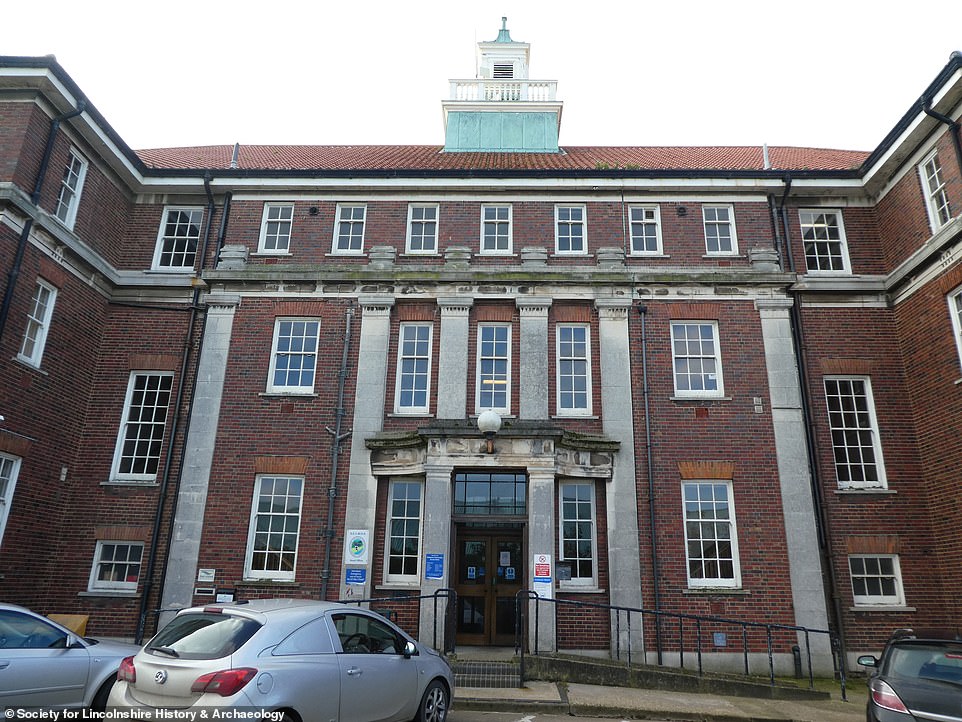
Skegness Town Hall ‘links nicely with its surrounding architecture, including the Grade II registered Esplanade and Tower Gardens that helped establish Skegness as a seaside resort’, says Historic England
Skegness Town Hall was built in 1926 as a convalescent home to the designs of accomplished architect William Henry Ansell, reveals Historic England.
It continues: ‘It was re-purposed as the Town Hall in 1964 and is now used as council offices. It was built by the National Deposit Friendly Society as a memorial to members who fell in World War I and was opened by Queen Victoria’s granddaughter, Princess Marie Louise, accompanied by Neville Chamberlain, who was then the Health Minister.
‘Convalescent homes emerged in the mid-19th century when it became understood that the chances of a patient’s recovery from illness or surgery were greatly improved by staying in specialist facilities that promoted light, air, rest and good food.
‘The coast was a popular location due to the fresh air and healing properties of seawater, and by the late 19th century, the seaside town of Skegness had become a well-known health resort, with many convalescent homes dotted along the Lincolnshire coast such as this one.
‘According to an 1888 guidebook of seaside health resorts in England and Wales, “Skegness has what is infinitely more essential to invalids… in its bracing air and salubrious ozone laden atmosphere.”
‘Architecturally, the neo-Georgian site was inspired by the typical Palladian plan popular at the time, consisting of a central building flanked symmetrically by pavilions. It has well-preserved internal features that demonstrate its former use as a convalescent home. The building also links nicely with its surrounding architecture, including the Grade II registered Esplanade and Tower Gardens that helped establish Skegness as a seaside resort.’
Source link : https://www.dailymail.co.uk/travel/travel_news/article-9930195/The-six-new-seaside-gems-awarded-Grade-II-listed-status-Skegness-Townhall-Hythe-Pier.html












